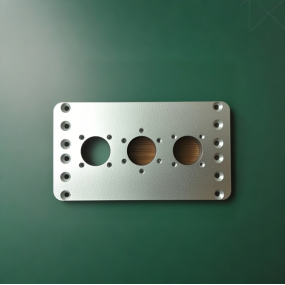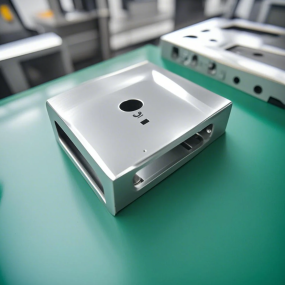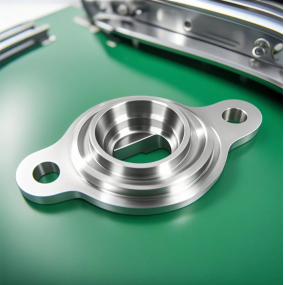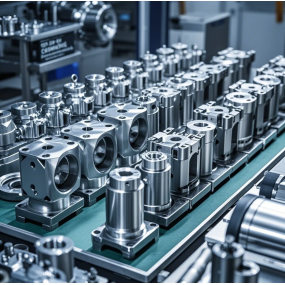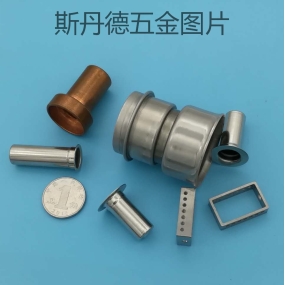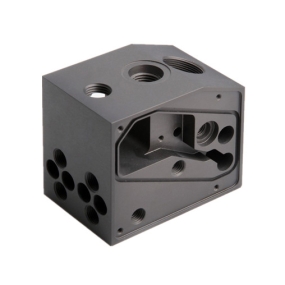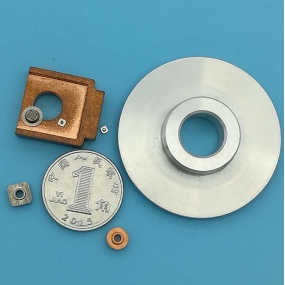Sheet metal parts are a comprehensive cold processing process for metal sheets, including cutting, punching/cutting/compounding, folding, welding, riveting, splicing, and forming. 1. The equipment for the shearing process is a shearing machine, which can cut a sheet metal into a basic shape. Advantages: low processing cost; Disadvantages: general accuracy, burrs in the cutting, and the single cutting shape is a simple rectangle or other simple shapes composed of straight lines. Before the shearing process, the unfolding size of the part must be calculated. The size of the unfolding size is related to the bending radius, bending angle, plate material, and plate thickness. 2. The equipment for the punching process is a punching machine, which can further process the cut material into shape. Stamping various shapes requires different molds. Common molds include round holes, long round holes, and bosses; high precision. Boss: The material is not removed. Note that the height of the boss is limited, which is related to the material of the plate, the thickness of the plate, and the angle of the inclined surface of the boss. There are many kinds of bosses, including heat dissipation holes, installation holes, etc. Due to the influence of bending, the edge of the design hole is limited from the edge of the plate and the bending edge 3. Laser cutting processing equipment: Laser cutting machines can remove materials that cannot be completed by shearing and punching processes, or when the hardness is large, it is easy to damage the plate of the mold, such as rounded corners, or there is no ready-made mold to press the required shape. Laser cutting can be used to complete the forming advantages of the material before bending: cutting without burrs, high precision, and can cut any graphics, such as leaves, flowers, etc. Disadvantages: high process cost 4. Bending processing equipment: bending machines, rolling machines They can fold or roll metal sheets into the desired shape, which is the forming process of parts; the process of cold pressing the metal sheet through the upper and lower knives of the bending machine to deform it, and the process of obtaining the desired shape is called bending. Bending is the last step in the forming of sheet metal parts. Whether the parts can be unfolded and bent to form needs to pay attention to several points. Let me tell you about the following. 1. Lack of materials, as shown in the figure below, the boss is too high, which exceeds the ductility of the material. The boss is generally used to raise the installation size or avoid installation conflicts, so the boss must be made without changing the internal structure of the material and without affecting the structural strength. For example: the cone surface of the boss is at an angle of 45 to the reference plane, and the height is 3 times the thickness of the plate. 2. Redundant materials: Redundant materials are often closed at multiple bending edges, mostly due to process errors or drawing errors. 3. Bending restrictions: Most bending machines have certain restrictions on bending. Unilateral height: depending on the size of the bending machine and the height of the upper knife, the solution can be to use multilateral large-angle bending. Bilateral height: not greater than the maximum height of one side, in addition to all restrictions on unilateral height, it is also limited by the bottom edge: bending height < 4. Since sheet metal parts are formed by bending a piece of metal sheet, the contact of the bending edge is not sealed and there is no hard connection. If not treated, it will affect the strength. The usual treatment method is welding. The technical requirements on the drawings are: welding corners, welding corners, and rounding 5. Surface treatment is not suitable for hot-dip galvanizing due to the thinner sheet metal parts. Common surface treatment methods include: phosphating, electrostatic spraying, and the color varies with the project. This process is suitable for sheet materials that are black parts with untreated surfaces
Hello! Welcome to EMAR's website!
 English
English » »
» »
 Spanish
Spanish Arabic
Arabic French
French Portuguese
Portuguese Belarusian
Belarusian Japanese
Japanese Russian
Russian Malay
Malay Icelandic
Icelandic Bulgarian
Bulgarian Azerbaijani
Azerbaijani Estonian
Estonian Irish
Irish Polish
Polish Persian
Persian Boolean
Boolean Danish
Danish German
German Filipino
Filipino Finnish
Finnish Korean
Korean Dutch
Dutch Galician
Galician Catalan
Catalan Czech
Czech Croatian
Croatian Latin
Latin Latvian
Latvian Romanian
Romanian Maltese
Maltese Macedonian
Macedonian Norwegian
Norwegian Swedish
Swedish Serbian
Serbian Slovak
Slovak Slovenian
Slovenian Swahili
Swahili Thai
Thai Turkish
Turkish Welsh
Welsh Urdu
Urdu Ukrainian
Ukrainian Greek
Greek Hungarian
Hungarian Italian
Italian Yiddish
Yiddish Indonesian
Indonesian Vietnamese
Vietnamese Haitian Creole
Haitian Creole Spanish Basque
Spanish Basque


